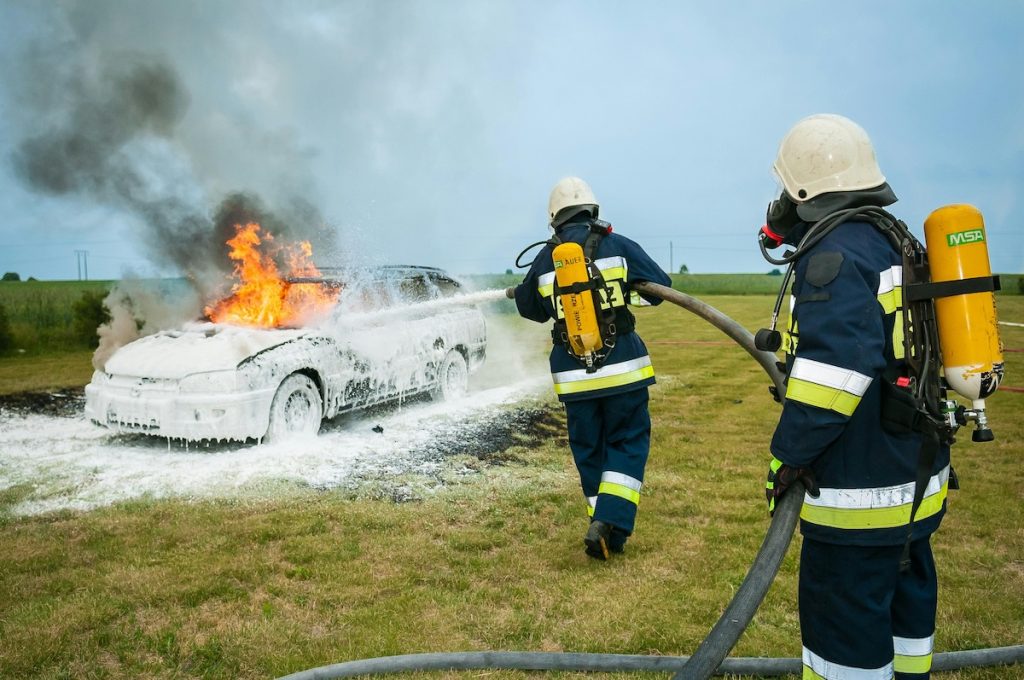Firefighting foams have long been hailed as indispensable tools in combating fires, particularly those fueled by flammable liquids like petroleum. Among these, Aqueous Film-Forming Foam (AFFF) has emerged as a popular choice due to its remarkable effectiveness in suppressing stubborn fires. However, beneath its surface lies a concerning reality: the potential harm it poses to human health.
Despite mounting evidence of these health hazards, the regulatory landscape surrounding AFFF remains complex, and industry responses have been varied. It is imperative to shed light on these pressing issues, foster awareness, adopt safer alternatives, and advocate for stricter regulations.
In this article, we’ll embark on a journey to unravel the intricate interplay between foam, fire, and health. We’ll equip readers with the knowledge they need to understand the full scope of the detrimental impact of AFFF firefighting foams on human health.
Table of Contents
Cancer Risks Associated with AFFF Firefighting Foams
AFFF exposure carries some concerning health risks. One of the most serious is the increased risk of cancer for firefighters and nearby individuals. AFFF contains a potent mix of per- and polyfluoroalkyl substances (PFAS), which have been identified as potential carcinogens by various scientific studies.
Exposure to these carcinogenic chemicals is linked to increased risk of several types of cancer, including prostate, kidney, testicular, and breast cancer. Firefighters, who often face repeated and prolonged exposure to AFFF during fire suppression activities, are particularly vulnerable to these cancer risks.
Cancer fears from AFFF foam have sparked lawsuits by firefighters, the military, and impacted communities. These lawsuits allege that AFFF manufacturers were aware of the health risks posed by their products. However, they failed to adequately warn consumers or take sufficient measures to mitigate these risks.
As a result, AFFF lawsuit settlement amounts have become a topic of significant interest and concern. Those affected by AFFF contamination are seeking financial recourse. This compensation aims to cover pain and suffering, lost income, medical bills, and other damages caused by exposure to AFFF chemicals.
TruLaw estimates AFFF lawsuit settlements could range widely from $10,000 to over $300,000. This variation depends on factors like the claim’s strength, exposure level, and the health problems suffered.
Endocrine Disruption and Hormonal Imbalance
Beyond the concerning link to cancer, AFFF exposure raises concerns about its potential to disrupt the body’s hormonal system. PFAS chemicals in AFFF can mimic natural hormones, interfering with their production and function.
Exposure to PFAS chemicals in AFFF can disrupt hormonal balance, resulting in various health issues known as endocrine disruption. These effects may include disruptions in reproductive function, thyroid dysfunction, metabolic disorders, and developmental abnormalities.
Springer Nature states that PFAS exposure is linked to various health issues. These include dyslipidemia in adults and adverse effects on immunity and development in children. Growing evidence indicates that PFAS exposure affects thyroid hormone function, with varied associations based on factors like PFAS type, exposure age, and gender.
Numerous epidemiological studies show sex-specific links between exposure to perfluorooctanoic acid (PFOA) and perfluorooctane sulfonic acid (PFOS) and thyroid disorders.
Firefighters and individuals exposed to AFFF may experience hormonal imbalances due to repeated and prolonged exposure to these chemicals. Such imbalances can have far-reaching implications for overall health, impacting fertility, metabolism, and growth and development. This is particularly true in children and adolescents.
Respiratory Health Concerns
Inhalation of AFFF particles and vapors can lead to respiratory issues. Exposure to airborne contaminants during foam application and cleanup can also pose risks.
Exposure to AFFF chemicals may exacerbate pre-existing respiratory conditions such as asthma, chronic obstructive pulmonary disease (COPD), and bronchitis. AFFF exposure has also been linked to the development of new respiratory symptoms and conditions. These include coughing, wheezing, shortness of breath, and respiratory tract irritation.
The respiratory health risks associated with AFFF underscore the importance of implementing stringent safety measures and respiratory protection protocols during firefighting operations. Firefighters and emergency responders need proper respiratory protective equipment. They also require comprehensive training on its proper use to minimize respiratory exposure risks to AFFF chemicals.
Neurological Effects
Exposure to PFAS found in AFFF has been linked to potential neurological effects, including cognitive impairment, neurodevelopmental disorders, and neurodegenerative diseases. These chemicals can cross the blood-brain barrier, leading to direct interactions with the central nervous system.
As per NIH, PFAS penetrates the blood-brain barrier and accumulates in brain tissues, posing a probable risk for neurotoxicity. Research analyzing PFAS levels in human brains and those of polar bears and rats reveals varying accumulations across different brain regions.
Evidence suggests that PFAS exposure in humans correlates with attention-deficit/hyperactivity disorder (ADHD) in children. It also indicates an elevated risk of Parkinson’s and Alzheimer’s disease-related mortality in older populations.
Firefighters, who often encounter AFFF during firefighting operations, may be particularly susceptible to neurological effects due to repeated and prolonged exposure to these chemicals. Furthermore, individuals in communities affected by AFFF contamination may also face neurological risks through environmental exposure pathways.
Reproductive Health Risks
Studies have shown that exposure to PFAS chemicals can disrupt reproductive hormone levels and menstrual cycles in women. Additionally, PFAS exposure has been associated with reduced sperm quality and fertility in men. These reproductive health effects can have profound implications for individuals attempting to conceive and may contribute to difficulties in achieving or maintaining pregnancy.
Moreover, high PFAS exposure is linked to developmental abnormalities and adverse pregnancy outcomes like preterm birth and low birth weight. Pregnant individuals and their developing fetuses are highly vulnerable to AFFF exposure’s reproductive health risks. It underscores the need to minimize exposure during pregnancy and reproductive planning.
According to The Guardian, women with elevated levels of “forever chemicals” in their blood face a 40% reduced likelihood of conceiving within a year.
The findings, published in Science of the Total Environment, surveyed over 1,000 women in Singapore attempting pregnancy. They revealed that those with PFAS mixture levels 25% above average experienced a 40% lower chance of conception. These women also had a 34% decreased likelihood of a live birth within a year. The study adjusted for factors including age, education, smoking status, and existing children.
Environmental Pollution and Public Health
AFFF firefighting foams pose a significant threat to environmental pollution, with dire consequences for public health. These foams contain PFAS that persist in the environment, contaminating soil, groundwater, and surface water.
Exposure to PFAS contaminants can lead to adverse health effects in humans, including cancer, reproductive issues, and immune system dysfunction. Moreover, wildlife populations are also at risk from AFFF contamination, threatening biodiversity and ecosystem health.
In summary, the use of Aqueous Film-Forming Foam (AFFF) firefighting foams poses grave risks to both human health and the environment. Heightened awareness, stringent regulations, and adopting safer alternatives are imperative to mitigate these dangers and safeguard public health and ecological well-being.

